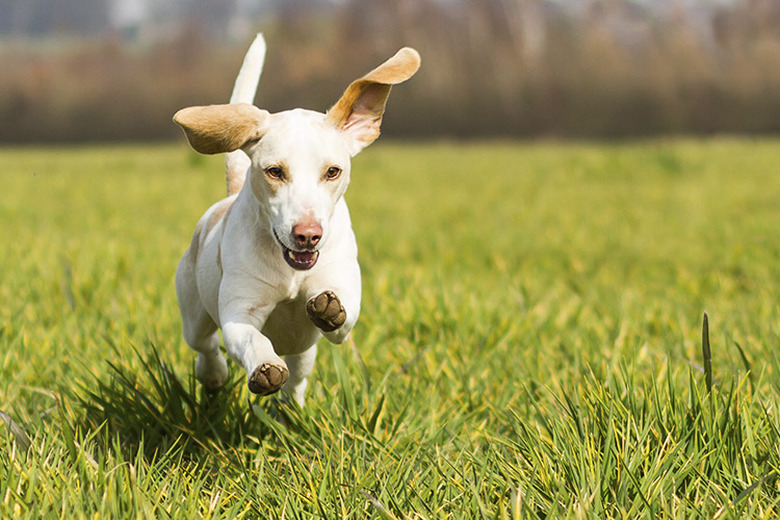Behaviors Of Intact Adolescent Male Dogs
An intact adolescent male dog produces a lot of testosterone. He's not yet an adult, but he's going through changes, and his hormones are messing with him. Your job is to direct him into correct behavior, and to be patient when he makes mistakes. It is during the adolescent stage that your dog will forge strong bonds with you, so embrace this time and give him the guidance he needs as he finds his place in the adult world.
Chewing
Adolescence occurs much later for some breeds than for others. A male typically has all his adult teeth by adolescence, but still has urges to chew. Make sure he has lots of hard toys to chew, so he doesn't use your possessions to strengthen his teeth and jaws.
Poor Attention Span
Professional dog trainer Jacque Lynn Schultz C.P.D.T believes that along with the shedding of the soft puppy coat and physical growth, forgetting commands and not paying attention are two of the clearest signs that your dog is entering adolescence. You may need to take a few steps back in his training to refresh him.
Marking
With the increase in testosterone production, a young dog begins to display some male-specific behaviors. Your leg-hiking adolescent is likely to go on a scent-marking frenzy, especially if females are around. He will take particular interest in close examination of the scents left by other dogs, and in marking on top of them.
Mounting
The simulation of sexual behavior begins in adolescence. Even in dogs that have been neutered, mounting is a sign of adolescence. In some adolescent males dogs, this behavior can become obsessive.
Roaming
Roaming is possibly the most worrisome tendency of the intact adolescent male dog, as it can cause tremendous distress for both you and him if he goes missing. Roaming is an instinct, and it becomes a strong urge for some males during this period of their life, especially if the young male is picking up scent from in-season females nearby. Make certain your yard is secure, and don't let your pal out of your sight when you're at the dog park.
Wariness
Dogs lose the unconditional trust of puppyhood and become wary of new situations and people. Lucky may begin to avoid strangers, or worse, he may become aggressive to them.
Aggression
It's normal for an intact adolescent male dog to display heightened aggression. His urges are telling him that other males are threats to his chances of finding a mate. Your job is to control his behavior and keep aggression in check. Other dogs will also direct increased aggression toward your pup. This is because as he grows out of puppyhood, other dogs will no longer overlook his indiscretions. Adult dogs are tolerant of puppy behavior because puppies are still learning about the world. That tolerance is not extended to adolescents.
Energy
Your dog's energy level will increase during adolescence. If you thought he was lively as a puppy, wait and see what he's like with all those hormones rushing through his body. The trick to dealing with this is to ensure your pal gets lots of exercise. If he doesn't get a chance to burn off his excess energy, he may direct it into unwanted behavior. This is a good time to take him to additional training, whether by joining a dog club or joining an obedience class to take his early training to a higher level. Whatever sport or work you train him for, your patient guidance now will establish the bond that will endure between you the rest of his life.
By Simon Foden
References
Pet Finder: Surviving a Canine's Adolescence
Veterinary Partner: Adolescence; The Teenage Dog
Pedigree UK: What to Expect from Your Adolescent Dog
Michigan State University: Managing Fear Aggression
About the Author
Simon Foden has been a freelance writer and editor since 1999. He began his writing career after graduating with a Bachelors of Arts degree in music from Salford University. He has contributed to and written for various magazines including "K9 Magazine" and "Pet Friendly Magazine." He has also written for Dogmagazine.net.
